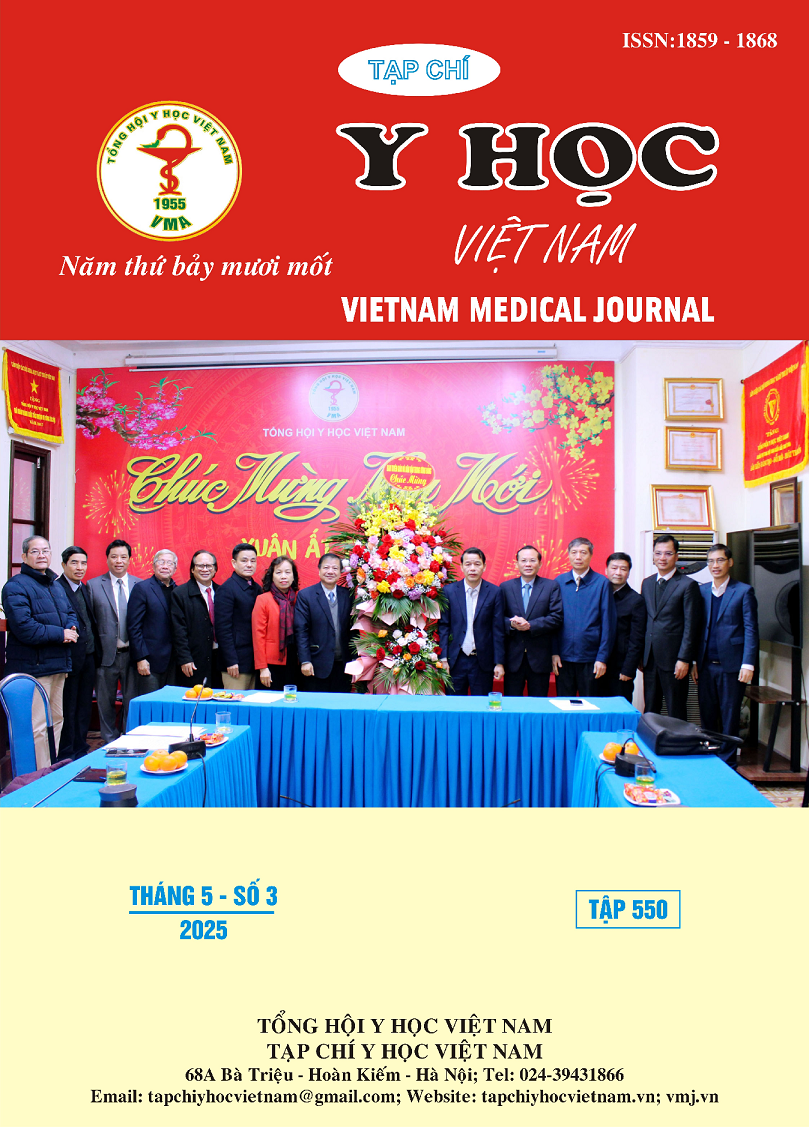ASSOCIATION BETWEEN WAIST/HIP INDEX AND RISK OF CARDIOVASCULAR DISEASE DUE TO ATHEROSCLEROSIS
Main Article Content
Abstract
Introduction: Atherosclerotic cardiovascular disease (ASCVD) is the leading cause of mortality worldwide and is rapidly increasing in prevalence in Vietnam. Early identification of predictive risk factors for ASCVD is crucial for optimizing preventive strategies. The waist-to-hip ratio (WHR) has been demonstrated to have a strong correlation with cardiovascular risk, outperforming body mass index (BMI) in predictive value. However, in Vietnam, research on the association between WHR and ASCVD risk remains limited. Objective: To evaluate the association between the waist-to-hip ratio and the risk of atherosclerotic cardiovascular disease in patients undergoing routine health check-ups at Can Tho University of Medicine and Pharmacy Hospital. Methods: A cross-sectional analytical study was conducted on 70 patients undergoing routine health examinations at the Outpatient Department of Can Tho University of Medicine and Pharmacy Hospital from June 2024 to December 2024. Results: The mean age was 56.24 ± 11.5 years. WHR showed a statistically significant difference among ASCVD risk groups (p < 0.001), with the mean WHR increasing progressively from the low-risk group (<5%): 0.89 ± 0.04 to the high-risk group (>20%): 0.96 ± 0.07. In addition to WHR, age was also associated with ASCVD risk, whereas BMI showed no significant difference among the groups (p = 0.375). Conclusion: The waist-to-hip ratio may serve as a useful complementary tool to BMI in assessing the risk of atherosclerotic cardiovascular disease.
Article Details
Keywords
Waist-to-hip ratio, atherosclerotic cardiovascular disease risk, ASCVD
References
2. Coutinho T., Goel K., Corrêa de Sá D., et al (2011), "Central obesity and survival in subjects with coronary artery disease: a systematic review of the literature and collaborative analysis with individual subject data", Journal of the American College of Cardiology, 57 (19), 1877-1886.
3. Czernichow S., Kengne A.-P., Huxley R. R., et al (2011), "Comparison of waist-to-hip ratio and other obesity indices as predictors of cardiovascular disease risk in people with type-2 diabetes: a prospective cohort study from ADVANCE", European Journal of Preventive Cardiology, 18 (2), 312-319.
4. Hassan S., Oladele C., Galusha D., et al (2021), "Anthropometric measures of obesity and associated cardiovascular disease risk in the Eastern Caribbean Health Outcomes Research Network (ECHORN) Cohort Study", BMC public health, 21 1-12.
5. Kahn B. B.,Flier J. S. (2000), "Obesity and insulin resistance", The Journal of clinical investigation, 106 (4), 473-481.
6. Kershaw E. E.,Flier J. S. (2004), "Adipose tissue as an endocrine organ", The Journal of Clinical Endocrinology & Metabolism, 89 (6), 2548-2556.
7. Liu C., Cheng K. Y.-K., Tong X., et al (2023), "The role of obesity in sarcopenia and the optimal body composition to prevent against sarcopenia and obesity", Frontiers in Endocrinology, 14 1077255.
8. Organization W. H. Regional Office for the Western Pacific. (2000). The Asia-Pacific perspective: redefining obesity and its treatment. Sydney: Health Communications Australia, 2020.
9. Pischon T., Boeing H., Hoffmann K., et al (2008), "General and abdominal adiposity and risk of death in Europe", New England Journal of Medicine, 359 (20), 2105-2120.
10. Poirier P., Giles T. D., Bray G. A., et al (2006), "Obesity and cardiovascular disease: pathophysiology, evaluation, and effect of weight loss: an update of the 1997 American Heart Association Scientific Statement on Obesity and Heart Disease from the Obesity Committee of the Council on Nutrition, Physical Activity, and Metabolism", Circulation, 113 (6), 898-918.


